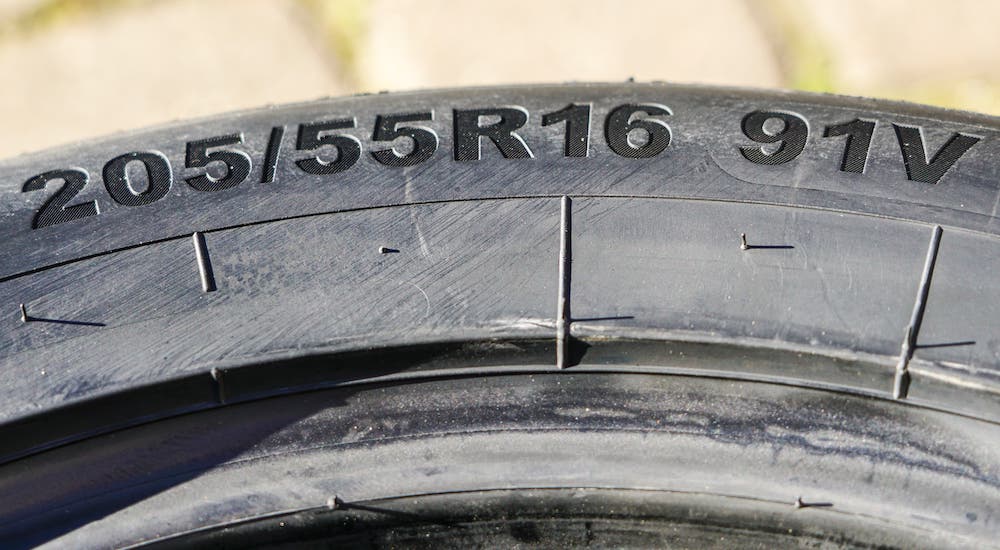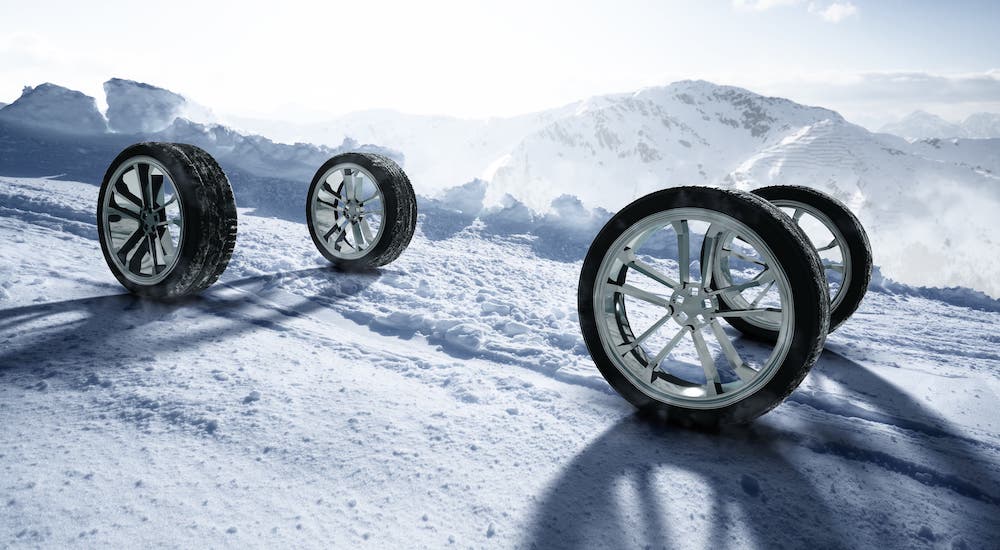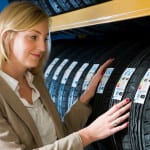Let’s face it – most car owners would be happiest with a vehicle that needed no regular maintenance, from transmission fluid changes to gasoline refills. But the reality is that owning a car comes with a responsibility for keeping it in decent operating condition. One of the most important aspects of this is proper tire maintenance, which includes replacing tires when the time is right. When your mechanic lets you know that your tire treads are low and it’s time for something new, you’ll need to check out your local Cincinnati car tire shops for the best deals and identify the product you want. But unlike a new pair of shoes, you can’t try on new car tires before you drive off – so how can you find what you want?
What Tires Do I Need?
Your car’s manual should have information about the tires the car needs. The specs look like an alien language – “175/65R15 82S” isn’t meaningful to most people. Fortunately, most tire shops help you out by having you enter your vehicle information first, which allows them to only show you tires with specs that are compatible with your ride, but you’ll still have options to choose from. Plus, there’s the question of what “purpose” the tires should serve, from “performance” to “summer” to “winter.” So here we’re going to simply break down what everything means, allowing you to know what you’re talking about when you schedule that appointment to get a new set of tires.
Tire Size
In the example above, the tire size is the part of the spec that reads “175/65R15”. If we replace numbers with what they mean, that reads as “Width/Sidewall Ratio-Construction-Wheel Diameter.” The example tire is 175 mm wide. As a rule of thumb, just stick with the width you’ve got unless you’re shopping for new wheels, too.
The sidewall ratio tells you how much tire you see from the side – here, a 65 means the sidewall height is 65% of the width, or 114 mm. Changing this can make a significant change to the appearance of your car, but like the width, you should only be using a new sidewall ratio if you’re using new wheels. If you’d like to try larger or smaller wheels, discuss it with your mechanic to avoid oversizing.
The last part, “R15”, details the construction. The letter depends on the way the tire is built, which really only matters to mechanics working on the tire, and the 15 declares that the tire is designed to fit a 15” wheel. If you’re keeping up, that means that your new tires will have the same sizing spec as your current tires, unless you’re also shopping for new wheels.

Tire Rating
The last part of the spec, which reads “82S” in the example, is the rating of the tire. The number “82” refers to the maximum load weight that the tire was designed to support, while the letter “S” indicates the tire’s highest safe speed. The codes are very specific – 82 corresponds to 1,047 lbs of loading and S to a top speed of 112 mph. For your purposes, a bigger number means higher weight capacity, and speed ratings generally increase in alphabetical order from L to Y (with the exception of H, which is rated for 130 mph).
If you’re an average driver, you really don’t need something rated to drive 130 mph, so if you’re comparing two tires and the only differences are cost and an S or a W speed rating, take the cheaper option. Unless you plan to drive at high speeds – Baja-style desert off-roading or track days, for example – the speed rating won’t matter. We’d recommend sticking with the same or similar weight rating that you currently have, but if the cost is a concern, you could consider dropping/increasing it by up to 3 steps from the manufacturer’s recommended rating if you rarely/often weigh down your ride.
Sidewall Markings
If you’ve taken the time to find out what your tire’s specs are, you’ll have probably noticed that there’s a lot more information printed on the sidewall. They include ratings for how quickly the tires should wear, indications of mud, snow, and winter-related enhancements, and modifications by the original vehicle manufacturer.
Your tire shop will indicate the anticipated lifespan or the tire’s warranty in miles, so knowing the exact wear rating isn’t really important. Longer is always better and generally more cost-effective. Similarly, you don’t need to worry so much about whether your current tires can handle snow; your tire shop will allow you to filter tires by capabilities so you can shop for the type you need your new tires to be.
Tire Types
The biggest question you’ll need to answer is what kind of tire do you want? There’s a lot of choices out there – why would you choose one over another? Let’s break down your options.
Summer Tires
Made of hard rubber with shallow, grippy tread patterns, summer tires are great for handling dry roads and maintaining high fuel efficiency. They can manage moderate rainfall without trouble but are hopeless in snow, slush, heavy rain, or temperatures below 45 F/7 C. Opt for summer tires if you plan to change tires for wintertime and don’t experience frequent heavy rains.
Winter Tires
On the opposite end of the spectrum, winter or snow tires are designed with soft rubber that maintains good pliability in temperatures below 45 F/7 C. They feature deep tread patterns with many cuts and openings for snow and slush to move around in and create many locations for the tire to grab on to the surface. There’s nothing better for dealing with nasty winter conditions. Just make sure to change them out when it gets warm – they’re far noisier and less efficient than other types and will wear down very quickly as temperatures rise.
All-Season Tires
Moderate rubber hardness and intermediate tread designs effectively channel water away from the tire make “all-season” designs quite useful in inclement weather. They’re quite suitable for regions experiencing moderate winters with snowfalls of only a couple of inches or summers with frequent heavy rainfall. However, summer tires perform better in dry conditions, and winter tires are necessary for handling heavy snow, so most drivers who own all-season tires should still own a set of summer/winter tires for the more extreme season.
Performance All-Season Tires
Drivers with sportier rides and heavier feet should specify that they’re looking for performance all-season tires. This specialized style trades a bit of snow handling for improved grip during wet and dry conditions, allowing more enthusiastic acceleration and turning; the trade-off is especially easy to make if you’re only planning to use your all-seasons during the summer.
Touring All-Season Tires
Comfort-minded drivers will prefer touring all-season tires. These are tuned a little in the opposite direction of performance all-seasons, sacrificing some dry weather handling ability for reduced ride noise and improved overall comfort. Give these a shot for a smoother commute, especially if you often drive long highway distances or plan to use all-seasons in the winter.
Let’s Get Rolling
At first glance, it’s a lot to take in. If it was your task to understand the entire body of tire science, we would agree that there’s simply too much to learn. However, for the average driver, shopping for new car tires is quite simple.
Start by looking at the tires you currently have or looking up your vehicle tire specs online. That’ll present you with a short list of specs, so look out for. While shopping, you’ll see different warranty or tread life spans; we’d say go for the longest you can afford. Tires are the type of commodity where paying more pays off – you’ll spend less money in a decade buying good tires than you will buying cheap, short-lived ones.
Tire Shopping Is Easier Than You Think
The type of tire you want really depends on the climate and your regular driving conditions. Most of us in the US see a mix of summer and winter conditions, so most of us should own two sets of tires. Use summer tires for more arid regions and winter tires for snowy ones. Choose all-seasons instead if your summers are wet or your snowfalls are light. Lean towards performance if you love to feel G-forces and touring if you’d like everything to just be nice and quiet. When you boil it down, the subject of tires is really that easy!





